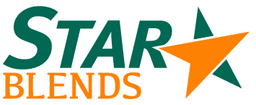Weather patterns, crop composition, and storage can affect your cattle feed differently each year. Forage testing ensures that you’re feeding the correct amount of nutrients to maximize their performance and your profits. Read on to learn about forage testing and why it’s critical for cattle nutrition.
What Is Forage Testing?
Forage testing is a lab process that provides the nutritional value of silage, pasture, hay, and other feedstuffs. The data is needed to determine which nutrients are needed to formulate a cost-efficient diet. Forage testing can also determine if mycotoxins are present in your feed.
Forage analysis will give you the total digestible nutrients (TDN), dry matter (DM), crude protein (CP), acid detergent fiber (ADF), and other critical data for efficient feed rationing.
How You Can Benefit From Forage Testing
You don’t want to waste money on unnecessary supplementation or have a nutritional deficiency lead to underperformance. Accurate forage testing can help you focus your resources where they matter the most — on the cattle feed ingredients your forage lacks.
It is easy to overestimate the forage quality based on visual appearance alone. Likewise, even if you know that you harvested under ideal conditions, the crude protein and energy content can be insufficient to meet your goals. Testing lets you optimize the feed and know exactly what your cattle are consuming.
Using data from forage testing, you can work with a feed manufacturer like Star Blends to provide your cattle with the necessary nutrients. We partner with your nutritionist to create the most balanced diet for your cattle. We can help with the dairy cow feed or other cattle feed for all life stages.
How To Get Cattle Feed Tested
Regardless of the type of forage you want to test, following these best practices will give you the best testing results:
- Take random samples: Avoid focusing on visually appealing samples. Instead, gather random samples that include bad-looking forage. You want to get a realistic view of the forage quality, not skew results by only looking at the best parts of it. Feed analysis is only as good as the sample provided to the laboratory.
- Take your sample at the optimal time: Testing silages after ensiling will give the best idea of digestibility and quality. The ensiling process changes the availability of the nutrients, so it is important to give the forages time to ferment. Hay should be sampled once it is baled and stored from multiple locations from the same crop.
- Use the right tools for bales: Taking surface samples won’t give you a clear picture. You should use a sharp coring device mounted on a powerful hand drill to get deep cross-section samples of bales. The coring diameter and probe length should be appropriate for the forage and packing type. However, a 12-inch to 24-inch coring tube should generally be used, as noted by Kansas State University.
- Seal the bag tightly: After placing your sample in the bag, seal it tightly and send it to the lab immediately. Take samples early in the week to avoid shipping delays over the weekend.
- Send the sample to a certified lab: To get the most accurate cattle feed testing results, use a lab certified by the National Forage Testing Association (NFTA).
Silage
It’s best to sample silage after the fermentation is complete. Mix at least 10 randomized silage handfuls in a clean bucket. Next, seal the sample in a bag and send it to the lab.
Avoid taking surface-level samples or spoiled silage exposed to air and moisture. Silage can also be tested fresh, but fermentation and storage can affect the nutritional composition.
Hay
You’ll need the very sharp coring tube we mentioned earlier to test hay bales. Drill at least 20 cores from bales or stacks representing the sampled lot. Take samples from the bale center at a 12–15-inch depth. To keep the sample relevant, don’t drill spoiled, weathered bales or parts you won’t feed to cattle.
Mix the core samples in a plastic bucket, put them all in a plastic bag, and seal them. Each lot should have its separate test samples.
Windrow
You’ll need to use sharp and long hedge shears to cut 6-inch sections from multiple locations of each windrow field, as instructed by Montana State University. Next, cut the samples into 1–3-inch long samples and mix them in a bucket. Finally, seal the sample from each lot in a bag and send it to the forage testing laboratory.
Fill the Nutritional Gaps with Star Blends
Testing your feedstuffs helps you determine the quality of your feed and alert you to any nutritional gaps you might have. We will work with your nutritionist to create custom supplements that fill these gaps and help keep your herd happy and healthy. Contact our team to learn more about our custom feed supplements.



